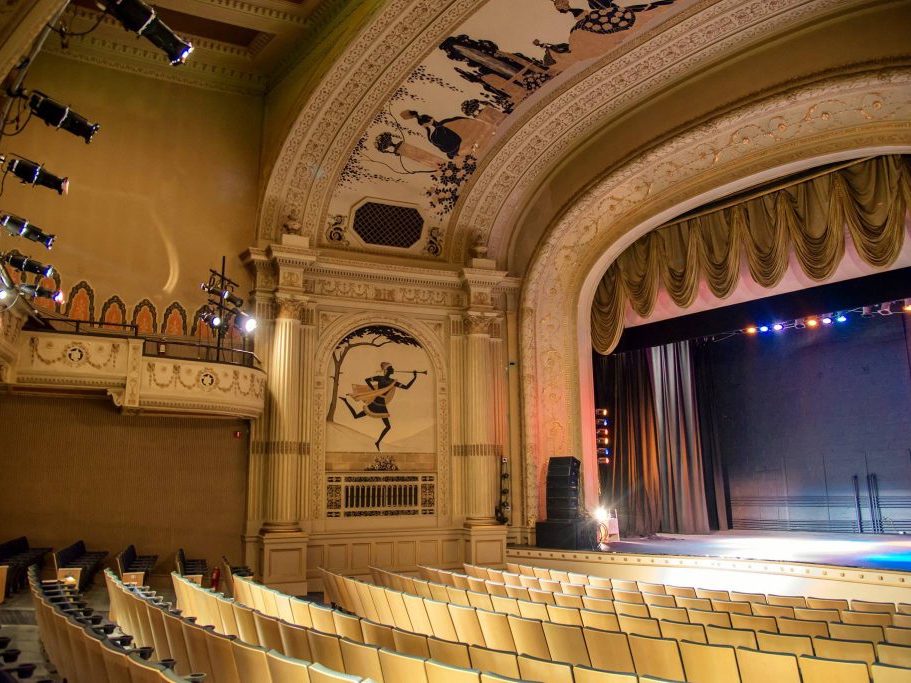The fiscal damage created by the COVID-19 pandemic has been felt across the globe. Arguably, one of the hardest hit industries is the arts and entertainment world. A year later, the breadth of the damage left in the wake of this crisis is frighteningly beginning to surface. Theatres throughout the country, many already operating on a shoestring, officially announcing their permanent closures; museums regrouping to avoid being shuttered; iconic tourist attractions sadly becoming a part of history past—the fallout is real and long lasting.
Ann Marie Casey, executive director of the North of Boston Convention & Visitors Bureau and co-chair of the MA Regional Tourism Councils shares, “North of Boston’s tourism industry generates 1.2 billion dollars a year. These numbers encompass lodging, dining, entertainment, retail trade, and transportation from visitors to the region who live at least 50 miles away. This does not even include local spending. Over the course of the pandemic, at a conservative estimate, tourism revenues on the North Shore are expected to decline by at least 485 million dollars.”
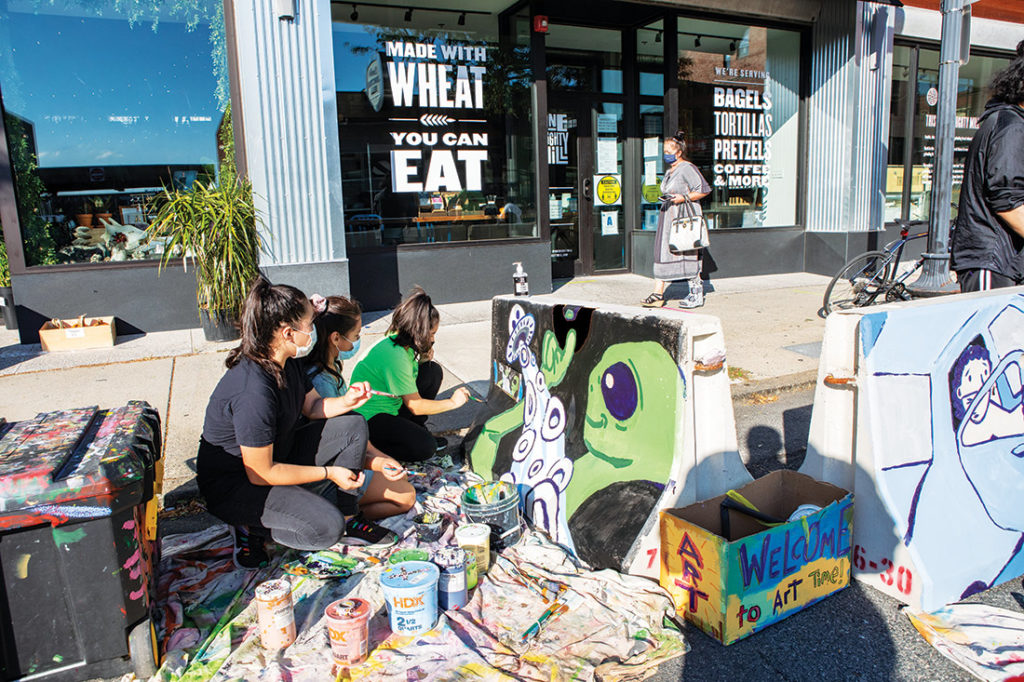
Thankfully, cultural organizations are composed of inventive thinkers. When they say, “the show must go on,” you can bet it will. Artistic souls will go down swinging to save their craft. Creating is in their blood. They have no choice. To look for the silver linings of this past year, look to the people working in the arts—strong, tenacious creatives who defined the word pivoting before it was in fashion. Out of their passion came vision, inspiration, and unexpected partnerships.
UNEXPECTED PARTNERSHIPS
Performing arts venues sought unique partnerships that allowed them to bring their programming outdoors, offering exposure and raising money for historic properties while forming a nice cross-pollination of new supporters. Bethany Dorau, regional site administrator for Historic New England’s properties says, “It was inspiring to see how many cultural and historical organizations came together to stay relevant. There was an online Tales & Ales presented in partnership with Newburyport’s Custom House Maritime Museum. We partnered with the Firehouse Center for the Arts for their Firehouse on the Farm series at the Spencer-Peirce-Little Farm in Newbury, where they presented five fully produced musicals (four of them drive-in style), and offered private picnics at the Beauport Sleeper-McCann House in Gloucester.”
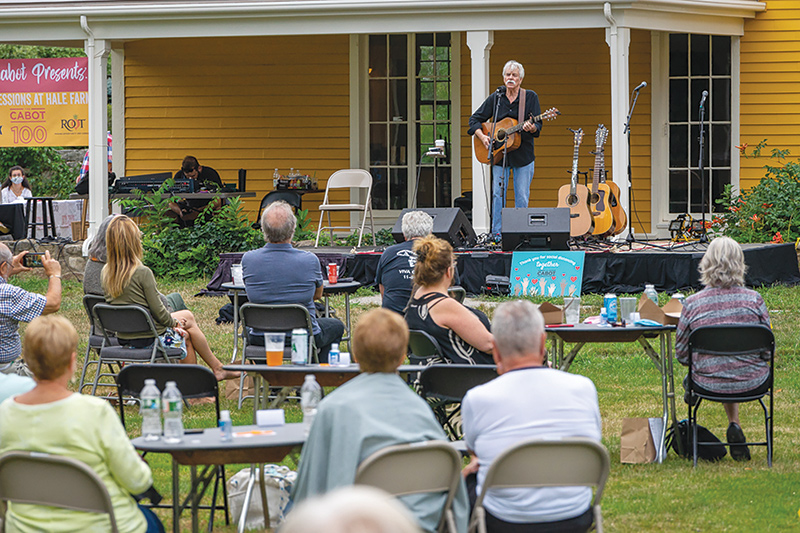
The Cabot presented a series of 20 outdoor concerts over four months at Hale Farm. Because they had to serve food along with cocktails, The Cabot worked with Salem’s non-profit Root to set up tables and chairs, a full bar, and prepare meals. The partnership supported Root’s community meal mission. The Cabot’s executive director, Casey Soward, says, “The last show of the year was on Halloween with The Suitcase Junket. The property was covered in snow. We gave away free hot cocoa. Everyone had a ball. We raised money to support the artists and to support Historic Beverly.”
As part of their Enterprising Women series around the 100th anniversary of suffrage, The House of the Seven Gables in Salem partnered with wediditforyou.org to present an online musical about women’s history. They also partnered with Community Supported Film to host their Community Conversations and worked with a documentary maker to show the film Councilwoman. They continued to host their lectures virtually. Dearest Dove, which had been performed live a few years ago and filmed by SATV was made available virtually for the first time and aired to participate in Salem’s So Sweet festival.
The Peabody Essex Museum in Salem launched a special end-of-year fundraising campaign—Feeding Community, where patrons could donate to unlock the challenge gift to benefit The Salem Pantry. Wendy Van Dyke, PEM’s director of communications, says, “There’s so much that needs help. It’s a joy to find ways to link together and help each other…to nourish our supporters’ desire to give while feeding those in need.”
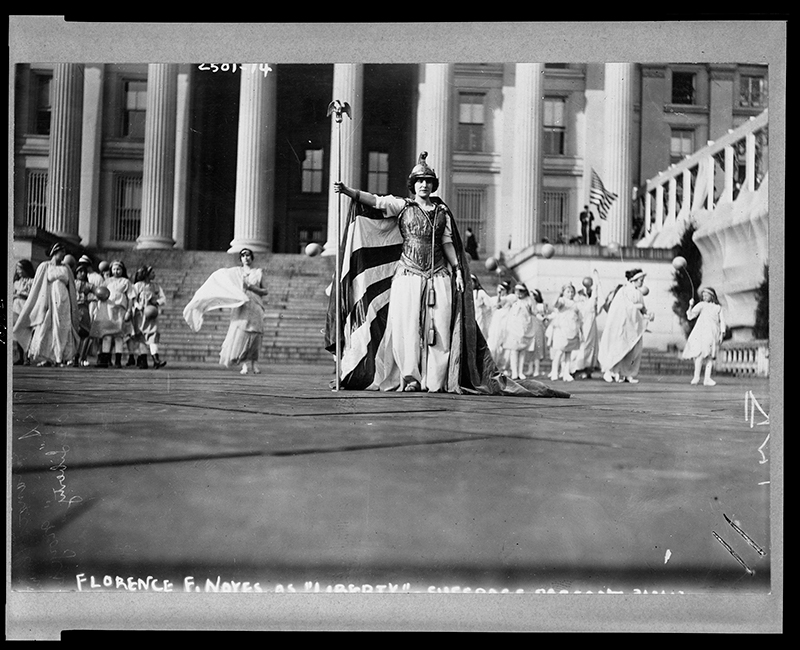
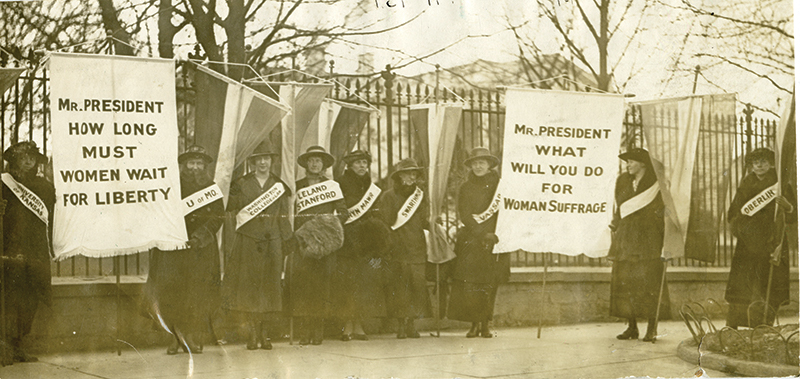
Lynn Museum/Lynn Arts utilized their outdoor spaces to offer safe and socially distant opportunities for community organizations such as Raw Art Works, Neighbor to Neighbor, and Prevent the Cycle to have small meetings and workshops. For RAW, it was the first time some of their groups were able to meet in person since the pandemic began, a critical necessity allowing them to have eyes on the children they serve.
As we were forced outdoors, there was no stronger advocate for bringing the arts with us than John Andrews, founder of the Creative Collective. He says, “The Mural Project allowed us to support small businesses and artists alike. We were able to layer murals, windows, and jersey barriers to not only support the downtown, but to provide work for freelance artists. Traditional businesses could learn a lot from creatives. Going forward, we need to continue to include a seat at the table for the creative community.” The North of Boston CVB supported the promotion of regional murals creating an interactive site northofboston.org/murals.
ART IMITATING LIFE
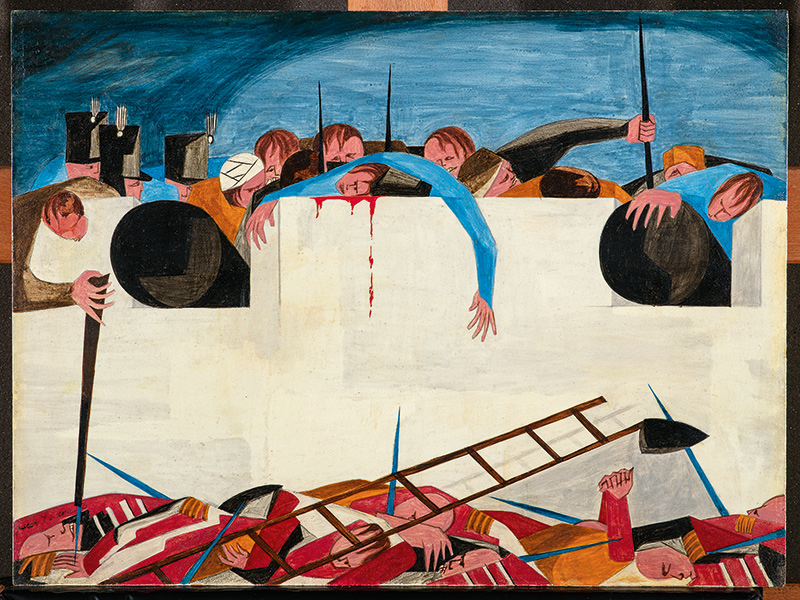
Museums used their voices to create awareness for racial justice and equality and political issues in the news with exhibits like the PEM’s Jacob Lawrence: The American Struggle and the Salem Witch Museum’s Race and the Salem Witch Trials, which focused on the importance of the enslaved woman, Tituba during the events of 1692. Lynn Museum/Lynn Arts hosted two poster exhibitions: Votes for Women: A Portrait of Persistence from the Smithsonian, and Black Women of the Suffrage Movement, organized by the North Shore Juneteenth Association, Inc. and also launched their long awaited exhibition, Untold Stories: A History of Black People in Lynn.
PIVOTING THROUGH TECHNOLOGY
When faced with the question as to how to provide culture, art, and music at this time, Karen Herlitz, director of marketing for Rockport Music, Shalin Liu Performance Center says, “Fortunately, a few years ago we installed a three-camera system in our hall. It was a lifesaver because we already had the technology in place.” Laughing, Herlitz says, “At the time, we never guessed our department heads would be in a situation to have to run it. We had a tremendous response from our patrons. Our artists are so thankful. For many of them, this was the first time performing in a room.” Both Rockport Music and The Cabot have plans to continue to have a streaming component of select performances in the future. At the Cabot, plans are underway to launch an entertainment streaming service in 2021, including a significant investment in installing additional state-of-the-art audio visual equipment.
The creation of online virtual events was appreciated by both domestic and international patrons of the Salem Witch Museum. Director of education, Rachel Christ, gave livestream lectures on not only Salem’s witch history, but European witch hunts, the witch in popular culture, the history of magic and modern-day witchcraft and, one geared toward highlighting a recent collection acquisition, a 1600 edition of the famous early modern book the Malleus Maleficarum.
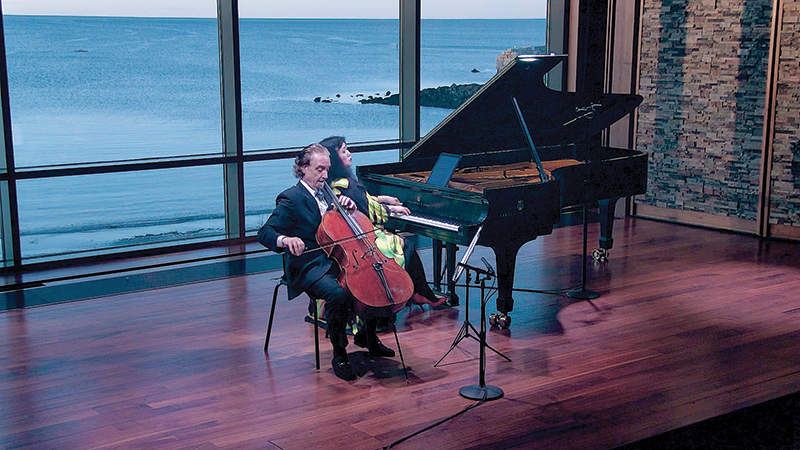
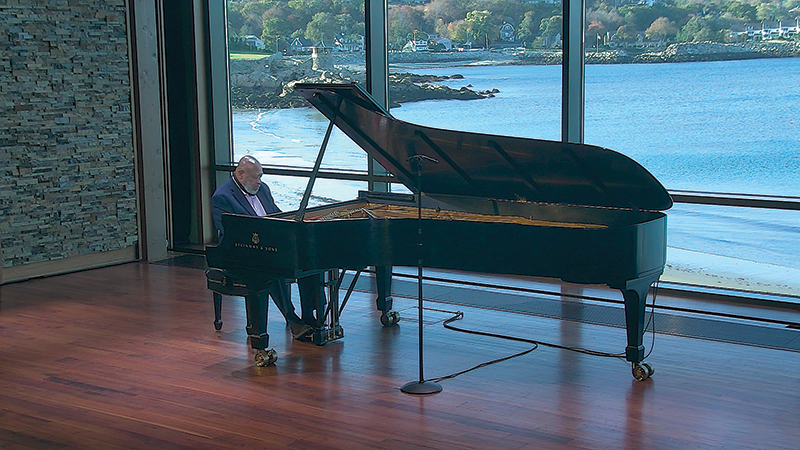
Chris Griffith, managing director of Gloucester Stage Company, says, “We were able to introduce our older patrons to online consumption. Our GSC staff worked closely with older patrons to make sure they had the tools to access our content. They were quick to pick it up. With new virtual performances each week, over 10,600 people from around the world with North Shore connections watched our shows. Robert Walsh, our artistic director, curated a season of new works that were more appropriate to this digital season format. We were able to create the season from scratch, which lead to the most diverse and female-lead season in Gloucester Stage history.”
CELEBRATING MILESTONE ANNIVERSARIES DURING A PANDEMIC
2020 was a year when several arts organizations were planning for milestone anniversaries and had to rethink their celebrations. The Cabot hosted a virtual 100th anniversary celebration that welcomed over 22,000 viewers, over 500 donors contributing, and included performances by James Taylor, Grace Potter, Judy Collins, Martin Sexton, Fantastic Negrito, and more. “Because it was our 100th, people were incredibly generous,” says executive director Casey Soward. “The Cabot was initially built coming out of the pandemic of 1918, as a way to get people back into the theatre. The fact that it is happening again 100 years later is amazing.”
Rockport Music celebrated the 10th anniversary of opening Shalin Liu, which included virtual performances, stories shared by board members, and educational highlights, as well as the namesake of the hall reading a poem about the hall. Karen Herlitz says, “We offered a lot of virtual events to keep donors engaged, like a pre-broadcast talk with jazz legend Kenny Baron. We did very well with our virtual summer gala, which donors were willing to support. We are already looking at how we can celebrate the 40th anniversary of our Rockport Chamber Music Festival this year.”
CHILDREN
Creating opportunities for children, some of the most keenly affected by the pandemic, was critical. A popular weekly program, PEM Pals, geared toward toddlers who come religiously every Wednesday morning to read a book, sing songs, and make art went virtual. Within one week, PEM employee Bethany Beatrice had the program up and running, filming from her home. The Cabot offered the opportunity to watch movies at home and hosted filmmaking classes for children in small, socially distanced groups. Gloucester Stage offered a series of online summer classes including a Young Playwrights Workshop. The Spencer-Peirce-Little Farm offered a virtual sheep shearing and Zooms with turkeys for pre-school children. For those who wanted to visit a museum, but prefer to do so only with their household, “quaran-team,” or homeschool group, the Wenham Museum booked private rentals where you had the museum to yourself. Private rentals continue and are in line with current state guidelines for gatherings and include access to all exhibitions and the first floor of the historic house.
SILVER LININGS
Wendy Van Dyke felt the PEM did a great job of pivoting staff to digital work they might not normally have time for. “Frontline employees were reassigned to take on tasks behind the scenes like working on back-end metadata on image files, cataloguing projects in the library, and adding captioning on videos to make them more widely accessible. As part of the We Are PEM campaign, for every membership purchased, the museum donated one to a frontline worker. It was a great way for our patrons to support the arts organization they love and, at the same time, support healthcare workers by giving them an opportunity to experience the transportive beauty and wonder of the museum during such a difficult time.”
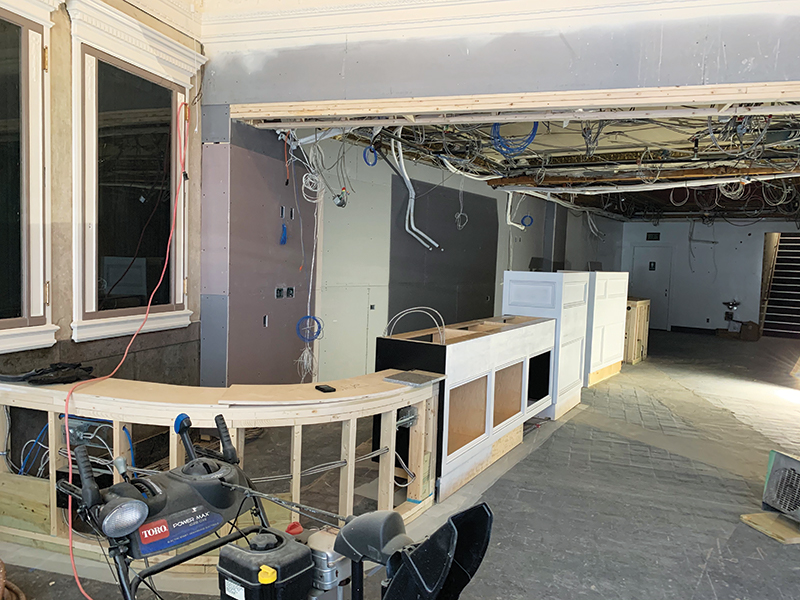
Virtual programming also allowed the PEM to access broader use of curators and designers for lectures and behind-the-scenes conversations. Van Dyke says, “In the past, there would be price and logistics barriers from bringing in people from around the world. In a virtual space, we can accomplish more.”
Downtime also afforded organizations the time to work on their physical infrastructure. Rockport Music made repairs to the ocean side of the building suffering saltwater damage. Gloucester Stage Company renovated their front lobby, box office, and restrooms to make them more ADA compliant. The Cabot undertook a major lobby renovation and updated their stage safety protocols by redoing their rigging, replaced old hemp lines, and installed three motorized trusses. Support has been so substantial that they’ve moved up the timeline on several projects, including a first-floor VIP club, laying the groundwork for an elevator to the second floor balcony, an additional handicap restroom on the second floor, and exterior improvements including glass canopies.
The words I heard repeatedly from the arts leaders I spoke to were innovation, creativity, inspiration, comradery, partnering, generosity, support, and hope. Words and sentiments that, no doubt, not only got us all through this unprecedented year, but will carry us forward with a renewed sense of confidence for the future of our arts industries.

